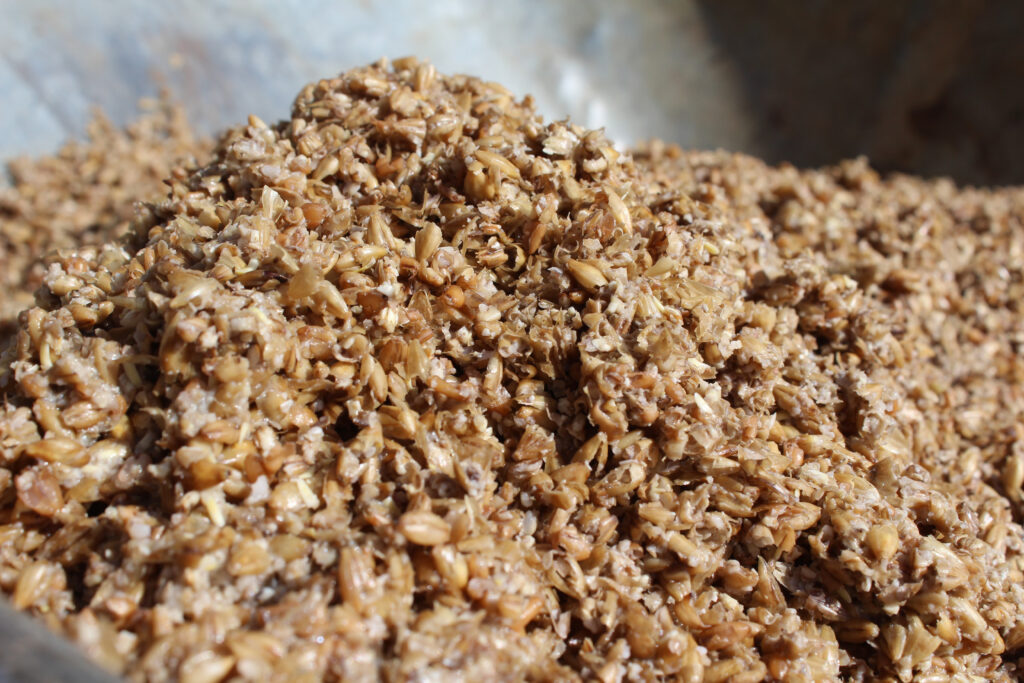Money, mycelium and micronutrients: the most predicted sustainable protein trends for 2023
Making predictions can be a difficult business, and as January rolls around keeping track of all the different trends and predictions is no mean feat, let alone working out which ones hold water.

The most predicted sustainable protein trends for 2023
For the fast-evolving world of sustainable proteins, anticipating future trends is especially challenging. What is the outlook for plant-based meat and dairy? Are mushrooms the next big thing? What does it mean that we’re living in the International year of Millet?
There’s one thing for sure – many heads are better than one, and that must surely also apply to crystal balls. With this in mind, we’ve taken a look at what experts and outlets across the sector have predicted for the coming year, and tallied up which trends they agree will dominate in 2023.
The articles we reviewed contained nearly 60 individual predictions for the coming year relating to sustainable proteins. After tallying them up, five clear frontrunners emerged:
2. Cost of living and geopolitical challenges
Honourable mentions
But first, some honourable mentions. Following a whirlwind year in 2022 for cultivated meat, which included a green-light from the US FDA, several predictions suggested this upward trajectory was only set to accelerate in the coming year, with the positive regulatory signs improving confidence in cultivated meat as a feasible commercial technology in years to come.
The second honourable mention goes to AI, which many forecasters saw as an increasingly influential technology both specifically in sustainable proteins and the food sector as a whole.
So without further ado, here are the most commonly predicted trends in sustainable protein for 2023:
5. Sustainable seafood will continue to make waves

Seafood was a focal point for many sustainable protein companies in 2021 and 2022, and this seems set to continue in 2023 and beyond. There are various factors making alt seafood an important priority area, which attracted $178 million in funding in the first 6 months of 2022.
Europe is the biggest importer of seafood in the world, and consumes three times more than it produces. This makes plant-based and cultivated seafood particularly appealing, as it offers an opportunity to address demand and alleviate the severe environmental and economic ramifications. Companies are mirroring this, with high environmental impact foods like prawn set to see some of the biggest expansions in 2023.
As with plant-based meat, new innovations are also allowing companies to expand beyond minced and breaded products into new areas such as fillets and sashimi to provide consumers with a rapidly expanding range of options.
In the realm of cultivated seafood, the fact that many sea creatures are cold-blooded could mean production is less energy intensive than for land-based meat, and by extension cheaper to produce.
4. Move over plants, there’s a new kingdom in town

While veterans in the sustainable protein space such as Quorn have used mycoproteins in their products for decades, new technologies such as precision fermentation are leading to a renaissance for fungi.
Research and innovation into the possibilities offered by mycelium in particular are hugely exciting. Mycelium is the network of fibres that make up much of the mass of many fungi (to use plants as an analogy, the familiar mushrooms are more akin to fruit, while the mycelium is more like the plant itself and often grows mostly underground or inside trees).
Fermenting these complex mycelial networks has enabled huge leaps in what is possible in the creation of convincing whole-cuts and authentic meaty textures, and can produce more nutritionally complete proteins than some of the plant-based options that are currently available.
It’s not just mycelium, however: the humble yeast, thought to be among the first species ever domesticated by humans over 9,000 years ago, is doing its part for the fungi kingdom. Precision fermentation is an incredible technology where microorganisms such as yeast (and also some other types of microbe) can be used to produce proteins and fats identical to those found in animal foods.
Precision fermentation has long been used in medical applications, such as in the production of insulin for people with diabetes and rennet used in cheesemaking, but companies are now exploring new applications. In several other parts of the world such as Singapore, Israel and the US, these products are already available to consumers, and 2023 could see them expand to Europe.
Fungi and fermentation are also well-established in the food sector and familiar to producers and consumers alike, often noted for their nutritional benefits. This means that compared to other innovation focus areas such as cultivated meat, there are fewer regulatory and consumer acceptance hurdles to be overcome.
3. Reduce, reuse, recycle

Environmental benefits are still a core pillar of sustainable protein’s value proposition, and while plant-based and cultivated meat are already far more sustainable than their conventional counterparts in terms of emissions, land use and water use, the sector is still searching for ways to be even greener.
With food waste another hot-topic item on the sustainability agenda, researchers and companies are exploring ways in which sidestreams and byproducts from other industries, such as sugarcane fibre and spent grains from brewing beer, can be used instead of being thrown away. Restaurants and chefs have already been exploring ways of using some of these byproducts as ingredients, but they also have much broader applications, particularly in the development of feedstocks for protein fermentation and cultivated meat.
Besides increased sustainability, upcycling these ingredients can also offer additional value to farmers by enabling them to sell more of the food they grow, and find buyers for what would previously have been thrown away.
2. Cost of living and geopolitical challenges

In the penultimate spot is a trend that transcends the sustainable protein sector, applying across the board in all aspects of European economies. The last few years have seen drastic changes and shocks to the economy, not least from the lingering impacts of Covid-19 and the ongoing war in Ukraine, driving inflation.
In response, consumers have been tightening their belts and forgoing those items they consider luxuries. It will therefore be imperative for sustainable proteins to prove their value to consumers. Several forecasters predicted that this could be a crunch-time for some plant-based products unable to satisfy consumer needs on taste, price and convenience – but also that items able to meet these criteria would continue to grow.
Success has already been seen here for companies able to offer competitive prices. The now iconic vegan sausage roll from UK budget bakery chain Greggs stands as a shining example. Initially launched in 2020, the sausage roll is priced at £1.25, matching its conventional counterpart, and remains hugely popular. Indeed, its success has led to an expansion in the number of plant-based menu items, which were specifically mentioned in Greggs’ recent earnings report, announcing a record uptick in sales.
Large retailers are also leaning into this trend, with several grocery chains developing competitively-priced, own-brand sustainable protein products.
The other side to this coin is the fact that private investment is also likely to be relatively harder to come by than in recent years, with more general investors increasingly hesitant to commit. As such, 2023 could see slightly tighter pursestrings for companies in the sustainable protein space, but plenty of opportunities remain. In particular, some forecasters expected this could lead to more investment in upstream technologies such as machinery, cell culture media and scaffolding, all of which are hugely beneficial to the development of the sector as a whole.
1. Clean labels and micronutrients

It is well documented that dietary shift will not happen unless sustainable proteins can compete with conventional animal products on taste, price and convenience. However, once these thresholds are met, health and nutrition are key motivators for consumers.
Health is the most commonly reported driving factor for the majority of consumers choosing plant-based products over their conventional counterparts, ranking higher than both environmental and ethical concerns. Interestingly, it is also among the top reasons people give as to why they do not want to switch from conventional meat, eggs and dairy – citing concerns that plant-based options lack key nutrients. Squaring this circle with consumers and also continuing to develop and deliver delicious, nutritionally complete foods must therefore be a high priority across the sector.
Minimally-processed foods and microbiomes are all the rage among a growing number of consumers, keen to use food as a tool to boost their immune systems, reduce inflammation and prevent the onset of lifestyle-related disease. For the most part, this trend has the potential to massively boost plant-based and fermentation-made foods, which on average have much better macronutrient profiles, combining high fibre and protein with low cholesterol and saturated fat.
In 2023, innovations in production methods are set to facilitate even bigger improvements in the health profiles of sustainable proteins, an aspect of which is likely to be the expansion of clean label products on offer. Some brands, such as Swiss company Planted, are already doing this – their original chicken pieces and chicken breast boasting an impressive recipe of only four simple ingredients. These products are tasty, nutritious and do not fall within the (somewhat nebulous) ‘ultra-processed’ bracket that some consumers are wary of.
In addition to this, opportunities leant by a growing body of research on fermentation are increasing the prevalence and bioavailability of key nutrients such as amino acids and omega-3 fatty acids that could allow plant-based products to surpass conventional meat not just in macro but also micronutrient profiles.
Overall outlook for 2023
The last couple of years have seen tremendous growth for sustainable proteins in terms of research, investment, and consumer uptake. 2023 may come with some additional challenges and new barriers to overcome, but it also promises countless opportunities for researchers and companies working on plant-based, fermentation and cultivated products.
What do you think will be the biggest sustainable protein trends in 2023? Did any important ones fly under the radar? Let us know on LinkedIn and Twitter.

